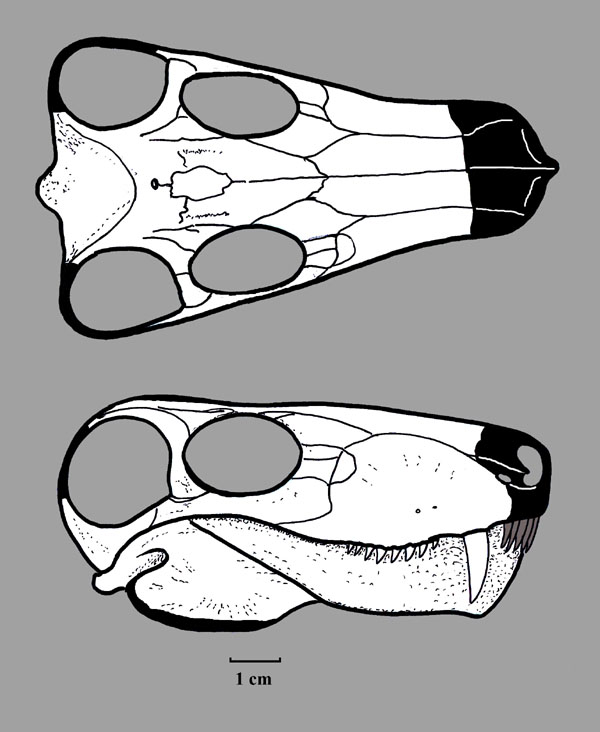Genus: Paragalerhinus SIGOGNEAU, 1970
Etymology: Greek, para, “near” + Galerhinus: Near Galerhinus.
= Galerhinus HUENE non BROOM, 1936
Etymology: Greek, gale, “weasel” and Greek, rhin- (rhis), “snout” +
us (m): Weaseal snout.
Species: rubidgei (BROOM, 1936) SIGOGNEAU, 1970
Etymology:
= Galerhinus rubidgei BROOM, 1936
Holotype: RC 2
Locality: Wellwood, Graaff Reinet District, Eastern Cape Province, South Africa.
Horizon:
Biostratigraphy: Dicynodon zone (Dicynodon lacerticeps-Whaitsia zone, KEYSER
1979, SACS 1980, Dicynodon laticerticeps zone KEYSER & SMITH, 1977-78,
Daptocephalus zone KITCHING, 1970, 1977, Upper Cistecephalus zone WATSON, 1914)
Age: Tatarian Age, Lopingian Subepoch, Zechstein Epoch, Late Permian.
Material: Fragmentary skull.
Referred material:
Locality: Ruhuhu, Tanzania, Tanganyika, East Africa.
Horizon: Hoedemaker member, Middle Teekloof Formation.
Biostratigraphy: Tropidostoma zone (Tropidostoma-Endothidon Assemblage zone
KEYSER, 1979, SACS, 1980, Tropidostoma microtrema zone KEYSER & SMITH,
1977-78, Lower Cistecephalus zone KITCHING, 1970, 1977, Endothiodon zone,
WATSON, 1914).
Age: Tatarian Age, Lopingian Subepoch, Zechstein Epoch, Late Permian.
Material:
K 107: Fragmentary skull and dentary.
= Galerhinus rubidgei BROOM, 1936
Etymology:
Holotype: IGP K107
Locality: Kingori, Ruhuhu Valley, Tanzania, Tanganyika, East Africa.
Horizon:
Biostratigraphy: Cistecephalus zone.
Age: Tatarian Age, Lopingian Subepoch, Zechstein Epoch, Late Permian.
Material: Fragmentary skull.
